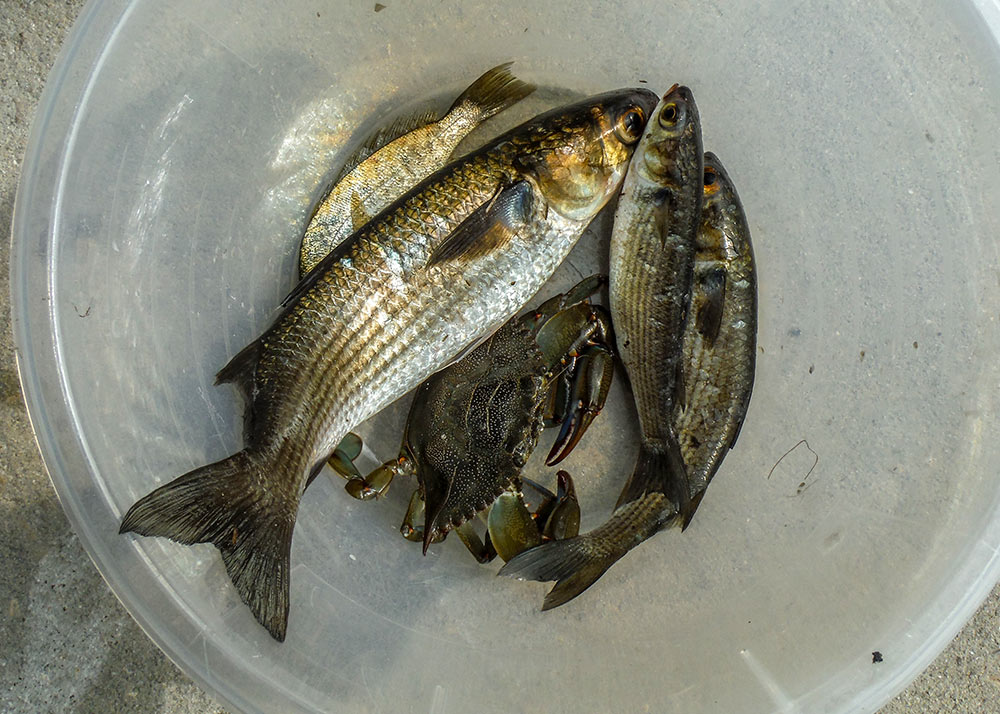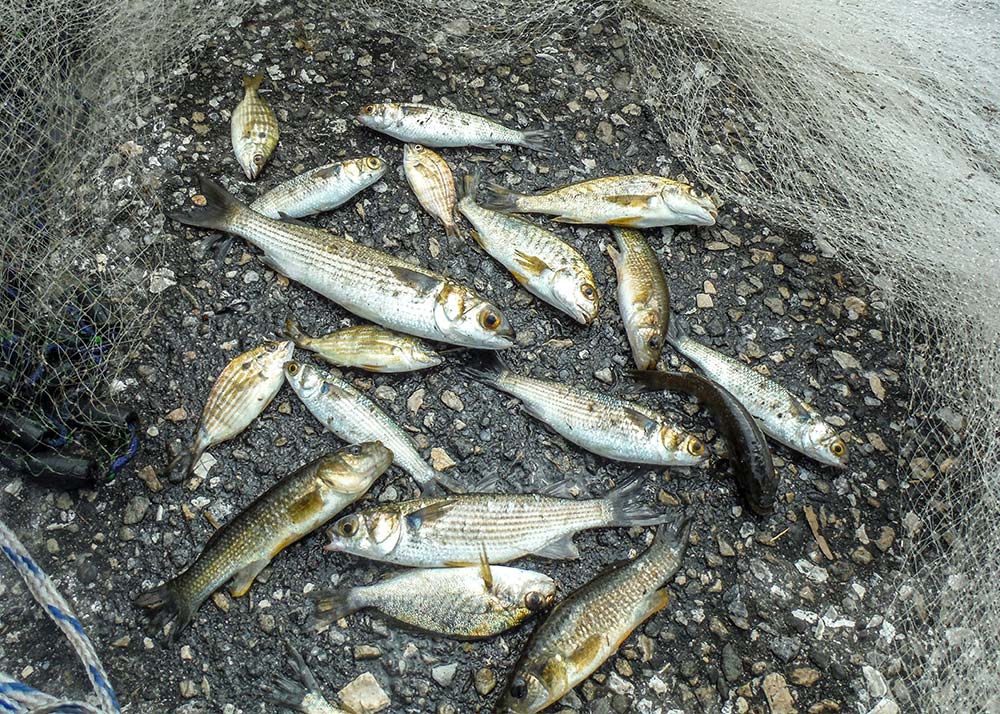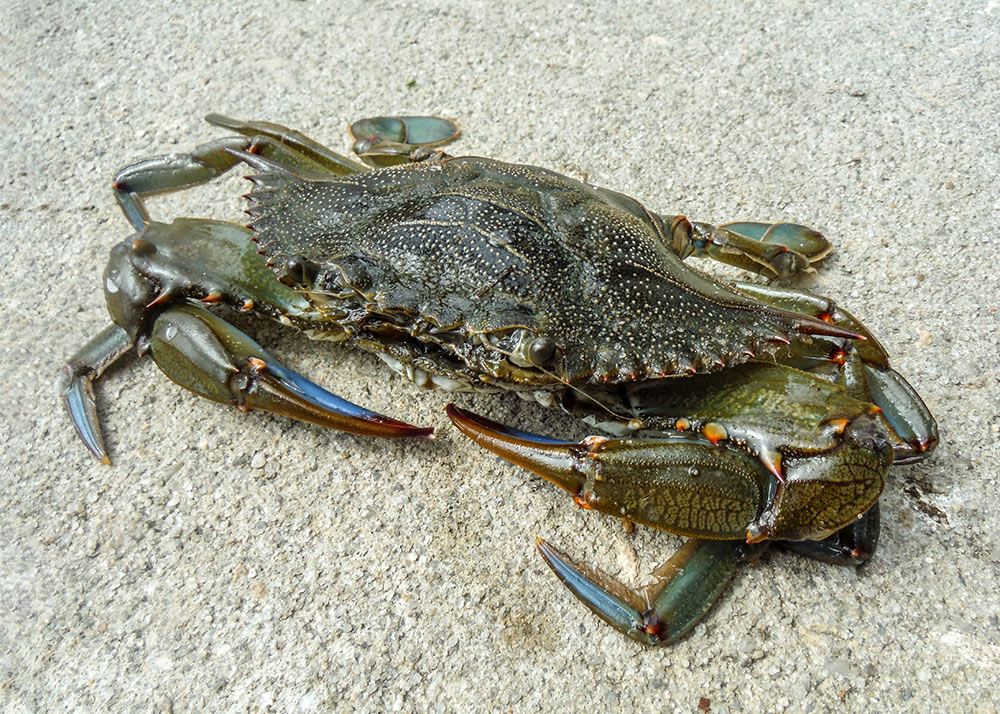
Known by several aliases (ling, lemonfish, crab eaters), cobia, a popular and nomadic game fish, frequent the entire Gulf Coast and Atlantic seaboard as far north as Chesapeake Bay. Bigger fish approach triple-digit weights and often slurp down bright bucktail jigs, swim baits and large streamer flies. Yet cobia can be finicky, too, and when that happens natural baits make the difference between hook-ups and refusals. Here are the top live baits for cobia fising.

Gathered with cast nets, traps or Sabiki rigs, pinfish are a common inshore bait that cobia love. Hand-size pinners are best for casting distance and offer a larger profile. Hook them through the chin and top of nose with a circle hook to match the bait size.
Another common forage species, black or silver juvenile mullet are mostly cast-netted, although some coastal tackle shops stock them. The slender shape makes for aerodynamic casting and they stay frisky in large live wells or even 5-gallon buckets on the bow. Cover the bucket with a damp towel to prevent escape, though.

Blue crabs comprise a major part of the cobia diet. They are difficult to cast accurately, however. The best use is hooking a live or fresh dead one through both shells inside the point and soaking it on an egg sinker rig or jig head near buoys, channel markers, artificial reefs and other structure.
Eels
Eels are like Gummy Bears to ling. Extremely hardy, these slimy, squirmy baits do require a towel for handling. Hook one through the chin/head and leave in a bucket ready to cast. Use only sea water in the bucket to keep the eels from curling when they hit the water.
Catfish
Hardhead catfish make great cobia baits. Catch several for an outing using cut bait soaked on the bottom. Use a pair of side-cutter pliers to snip the dorsal and pectoral spines for easier handling and hook through the lips with circle hooks. Catfish are extremely hardy, cast well and cobia love ’em.
Squirrelfish
These bony reef-dwellers are also a staple of the cobia diet. The reddish/pink hue adds to the attraction. Hook through the nose for casting or behind the dorsal fin to force the bait down into the water column around structure.









